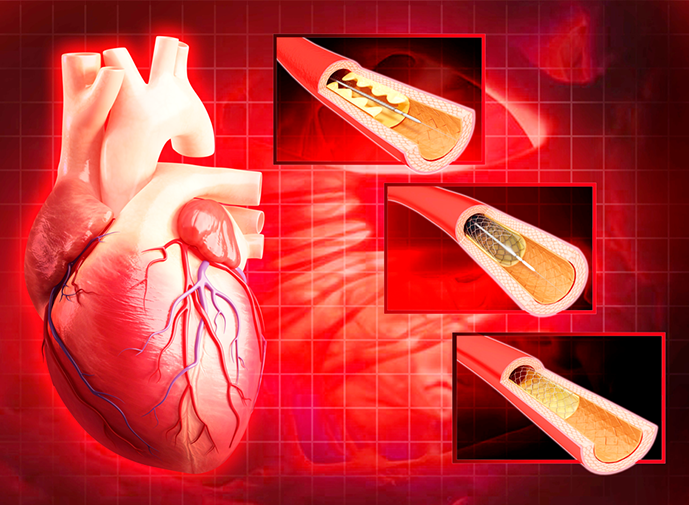Which Best Describes a Percutaneous Procedure
Albuterol nebulizer 25 mg qid. Ba View the full answer.

Percutaneous Coronary Intervention Pci Conditions Treatments Ucsf Health
Percutaneous transluminal coronary angioplasty.

. The Barts flank. An Xray procedure allowing the visualization of internal organs in motion Which of the following describes percutaneous transluminal angioplasty of the brachiocephalic artery through the skin into the brachiocephalic artery Using the ICD 10 codebook which of the following terms describes flat foot Pes planus. The tube can be inserted at the bedside b.
Percutaneous and endoscopic atrial fibrillation procedures. Confusion over appropriate coding of newer procedures performed as open or percutaneous is often due to interpretation of two accepted definitions of a surgeons visualization. The best exposure of the flank among the supine positions.
Doctors use PCI to open blood vessels to the heart that are narrowed or blocked by plaque buildup. C Have the wife demonstrate the procedure. Which explanation best describes how they are different.
It is inserted through your back or flank. D Ask another nurse to reinforce teaching. The tube is used for short-term feedings c.
Select all that apply Timolol 05 1 drop to each eye daily. This procedure is best known as. Percutaneous adult congenital heart disease treatment - ASD and PFO.
Which action s will the nurse perform when preparing to administer a topical medication. This route improves patient personal hygiene measure. It is invasive procedures in which tube is inserted via a peripheral artery either femoral artery in groin or raidal artery at the wrists.
Examples of percutaneous approach are arterialvenous catheter placement coil embolization of artery drainage of subdural hemorrhage via burr hole laser. This is usually achieved by different methods the most common being ballooning the narrow segment or deploying a stent to keep the artery open. Percutaneous coronary interventional PCI also known as angioplasty.
Select all apply 1. B Give the wife information about supplies. In surgery a percutaneous procedure is any medical procedure or method where access to inner organs or other tissue is done via needle-puncture of the skin rather than by using an open approach where inner organs or tissue are exposed typically with the use of a.
Question 5 of 10. Open in a separate window. Diameter of the tubes.
Advantages and disadvantages of positions for PCNL. Describe the procedure its risks and benefits and potential alternative treatments. This route decrease systemic adverse effects 3.
Which order s would be examples of percutaneous medication administration. A cardiovascular surgeon begins to perform a percutaneous transcatheter placement of an intracoronary stent but stops the procedure because of the patients respiratory distress. A percutaneous nephrostomy is the placement of a small flexible rubber tube catheter through your skin into your kidney to drain your urine.
A nurse preparing for a patients discharge after surgery is teaching the patients wife to change the dressing. Also passage through the skin by needle puncture including. 92920-53 CPT code 92920-53 is for Percutaneous transluminal coronary angioplasty.
It allows for bolus feedings d. Percutaneous approach is entry by puncture or minor incision of instrumentation through the skin or mucous membrane andor any other body layers necessary to reach the site of the procedure. How can the nurse be certain the wife knows the procedure.
Percutaneous carotid artery stenting. A significant rise in blood pressure as a result of stent blockage to essential organs. Single major coronary artery or branch 2.
Direct visualization Light-based visualization. Perkyū-tānē-ŭs Denoting the passage of substances through unbroken skin as in absorption by inunction. The client asks the nurse to explain how a PEG tube differs from a gastrostomy tube GT.
This route has a long duration of action and reapplication is often not require. There is little risk of infection e. Percutaneous coronary intervention.
Which best describes in-stent restenosis following stent placement. Location of the tubes. Endoscopic lead placement for defibrillator or pacemaker devices.
Percutaneous nephrostolithotomy or nephrolithotomy is the passing of a special medical instrument through your skin into your kidney. Silvadene 1 topically to affected area. Which best describes an advantage of a percutaneous endoscopic gastrostomy PEG tube.
The tube can be used for IV fluids. The major advantages of percutaneous route for medication administration include which. A Tell the wife exactly how to do it.
The nurse is caring for a client scheduled to undergo insertion of a percutaneous endoscopic gastrostomy PEG tube. It is commonly used to open a blocked artery in patients suffering a heart. Percutaneous coronary intervention PCI is a non-surgical invasive procedure with a goal to relieve the narrowing or occlusion of the coronary artery and improve blood supply to the ischemic tissue.
This route reduces the spread of infection. Can be performed by eye or with surgical loupes microscope or endoscope. Percutaneous ventricular assist device placement.
The authors did not describe percutaneous surgery in this position but they showed the benefit of better exposure of the flank by removing the supporting saline bag from the loin. Percutaneous coronary intervention is the general name for procedures that open up blocked coronary arteries blood vessels that supply oxygen via blood to. Percutaneous coronary intervention PCI also called coronary angioplasty is a nonsurgical but invasive procedure that improves blood flow to our heart.

Pediagenosis Mitral Valve Mitral Valve Repair Mitral Valve Disease

Percutaneous Coronary Intervention Pci Conditions Treatments Ucsf Health

Percutaneous Coronary Intervention Heart And Stroke Foundation

No comments for "Which Best Describes a Percutaneous Procedure"
Post a Comment